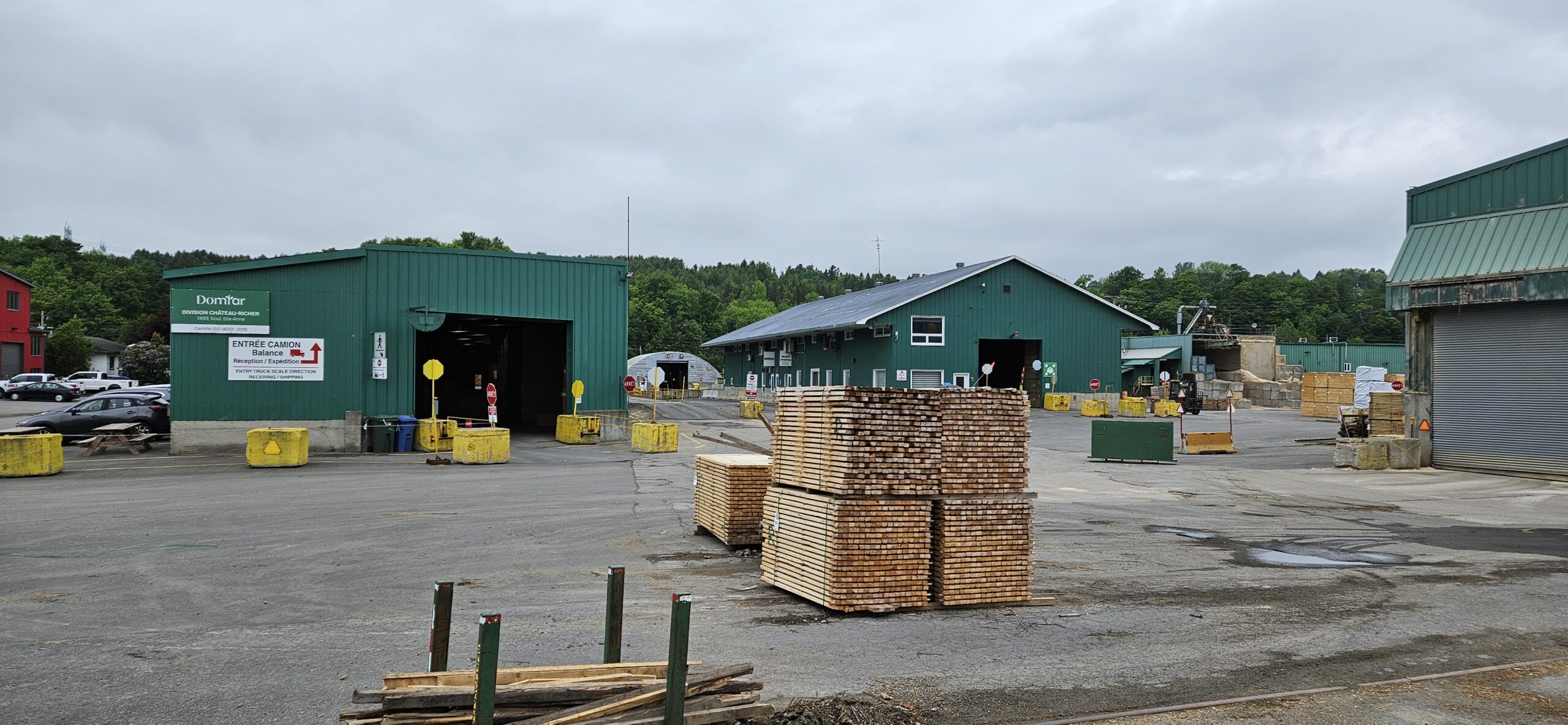The Domtar name may be primarily associated with pulp and paper, but we are also a leader in the wood products market. Our Wood Products business unit includes 21 production facilities in North America, and we produce close to 3 billion board feet of lumber and other remanufactured wood products annually, many of which are produced using byproducts from our other businesses.
These wood products include:
- Wood pellets used in power generation plants
- I-joists for floor and roof trusses
- Framing lumber for constructing walls, roofs and floors
- Decking boards used as high-performance flooring
A portion of production includes remanufactured wood products, many of which are produced at our Château-Richer facility located in Château-Richer, Quebec. Since the 1970s, the Château-Richer facility has produced lumber and wood products serving the Canadian and U.S. markets.
Situated on the north shore of the St. Lawrence River, the town of Château-Richer traces its roots back to 1678, when it became the site of the first rural parish in what was then known as New France. The parish grew over the centuries to become a town of about 4,500 people located in the Capitale-Nationale administrative region.
“This plant has a rich history, and with that history comes a deep sense of pride and attachment, not just to the facility itself but to the company as a whole,” says Christian Gauthier, plant manager. “Our plant is also deeply rooted in the local community. Most of our employees live nearby, and that creates a strong, enduring bond with the region. We’re more than just an employer here; we’re an active, committed member of the community.”
A Long History of Expertise
Christian has worked with Domtar and its legacy companies since 2003, shortly after earning his bachelor’s degree in wood engineering. Prior to becoming plant manager in 2014, he spent many years at Château-Richer, Manseau, Saint-Prime and other operations, focusing his work on mechanical maintenance, project management and ISO standards and certifications.
“Originally, Château-Richer was a sawmill, processing both hardwood and softwood,” says Christian, noting that the once-private family-owned business passed through several corporate ownerships prior to joining legacy Donahue in 1997 and expanding to become what is now Domtar. “In the ‘90s, it transitioned to more of a value-added plant that handled wood planing for multiple products. The planer still exists today and is a core part of our business. The products have changed over time, and they’ve evolved. But the facilities are still the same: a grading facility, drying kilns and three planing lines for different product types.”
Today, the remanufactured wood products facility employs around 100 workers who produce 40 to 50 million pieces. Château-Richer sources its raw materials from Domtar sawmills.
“We mainly source from within Domtar, aside from a few external purchases to meet occasional needs,” Christian explains. “But we’re generally self-sufficient, ensuring we recover Domtar’s sawmill byproducts to maximize the value of the trees harvested from the forest.”
Maximizing Value by Repurposing Waste
That self-sufficiency comes full circle as Château-Richer recovers its own offcuts and processes them for further use at other Domtar facilities. “Twenty percent of our production goes to meet Domtar’s internal needs. We supply all of Domtar’s planing operations in Quebec, including products used for packaging commodity items and lath for kilns at Domtar’s sawmills,” says Christian. “We recover our unusable pieces and pieces that are visually unsellable but are perfect for packaging. It’s another way to reduce waste.”
An additional 40 percent of Château-Richer’s annual remanufactured wood products output are pieces used to manufacture boxsprings.
“Our clients include some of the major mattress manufacturers,” says Christian. “We have a small Canadian market; most of it goes to the United States. There are different types of bedframe construction: some that integrate springs into a wood base and some that are all wood. Demand fluctuates depending on design, overall consumption and the economy. But there’s always natural demand. Between individual consumers and the hospitality sector, there’s constant need for these components.”
Finally, 40 percent of Château-Richer’s annual production is what’s known as strip. These are long, thin and narrow strips of lumber, often called furring strips, that are used in construction and renovation. The facility supplies several major hardware chains in Quebec and the United States.
“It’s a key growth area, and I would say it’s our future,” says Christian. “It complements our bedframe components production because strip production often leads to offcuts that can be used for boxsprings.”
The Growing Remanufactured Wood Products Market
Looking ahead, Christian is excited about what he sees as growth opportunities in the remanufactured wood products market. “We believe there will always be a place for us in the industry,” he says. “The key going forward is to continue diversifying our markets and expanding into sectors where we’ve had limited presence.”
For Château-Richer and Domtar, that includes growing its strip and lumber business. “Wood remains essential in construction, whether for new builds or renovations, and we’re well positioned with the raw material, the expertise and the infrastructure to serve that market,” Christian says.
Château-Richer is ready to grow well into the future, Christian says, particularly with its strip business. “It’s a space we intend to claim more firmly. We’re a major player in these remanufactured wood products, and it’s our responsibility to show up, grow and lead. Bedframe production, meanwhile, will continue to play a complementary role. A major competitor closed its doors this year, which has opened room in the market for strong, established players like us. That’s an opportunity we intend to seize.”






